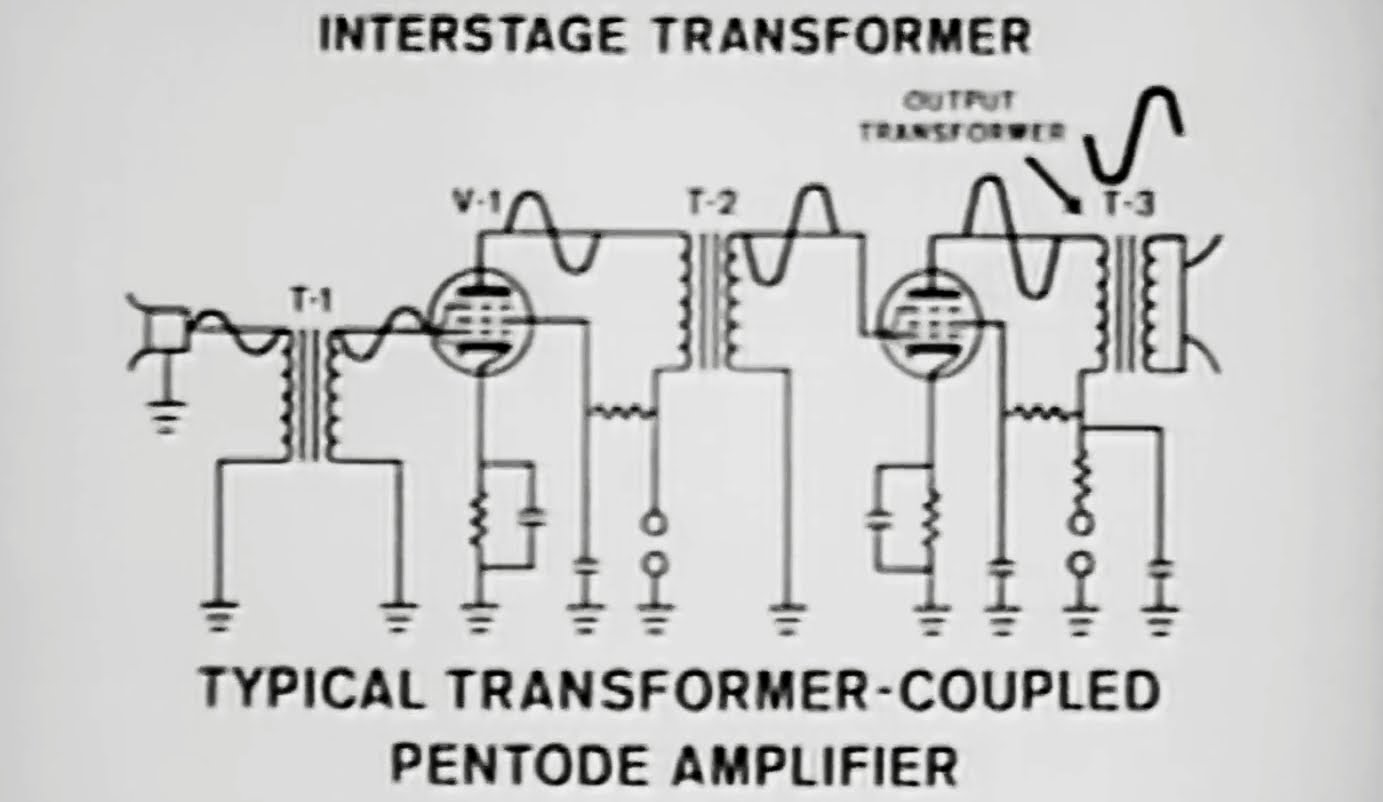more at
“THEORY, CONSTRUCTION AND OPERATION OF BASIC AMPLIFIERS IS EXPLAINED. FOUR GENERAL METHODS OF COUPLING ARE ALSO DISCUSSED.”
US Army Training Film TF11-3419
Reupload of a previously uploaded film, in one piece instead of multiple parts, and with improved video & sound.
Public domain film from the US National Archives, slightly cropped to remove uneven edges, with the aspect ratio corrected, and one-pass brightness-contrast-color correction & mild video noise reduction applied.
The soundtrack was also processed with volume normalization, noise reduction, clipping reduction, and/or equalization (the resulting sound, though not perfect, is far less noisy than the original).
An electronic amplifier is used for increasing the power of a signal.
It does this by taking energy from a power supply and controlling the output to match the input signal shape but with a larger amplitude. In this sense, an amplifier may be considered as modulating the output of the power supply.
The term amplifier is applied to anything from a circuit (or stage) using a single active device to a complete system such as a packaged audio hi-fi amplifier.
Types of amplifier
Amplifiers can be specified according to their input and output properties. They have some kind of gain, or multiplication factor relating the magnitude of the output signal to the input signal. The gain may be specified as the ratio of output voltage to input voltage (voltage gain), output power to input power (power gain), or some combination of current, voltage and power. In many cases, with input and output in the same units, gain will be unitless (although often expressed in decibels); for others this is not necessarily so. For example, a transconductance amplifier has a gain with units of conductance (output current per input voltage). The power gain of an amplifier depends on the source and load impedances used as well as its voltage gain; while an RF amplifier may have its impedances optimized for power transfer, audio and instrumentation amplifiers are normally employed with amplifier input and output impedances optimized for least loading and highest quality. So an amplifier that is said to have a gain of 20 dB might have a voltage gain of ten times and an available power gain of much more than 20 dB (100 times power ratio), yet be delivering a much lower power gain if, for example, the input is a 600 ohm microphone and the output is a 47 kilohm power amplifier’s input socket.
In most cases an amplifier should be linear; that is, the gain should be constant for any combination of input and output signal. If the gain is not constant, e.g., by clipping the output signal at the limits of its capabilities, the output signal will be distorted. There are however cases where variable gain is useful.
There are many types of electronic amplifiers, commonly used in radio and television transmitters and receivers, high-fidelity (“hi-fi”) stereo equipment, microcomputers and other electronic digital equipment, and guitar and other instrument amplifiers. Critical components include active devices, such as vacuum tubes or transistors. A brief introduction to the many types of electronic amplifier follows.
Power amplifier
The term power amplifier is a relative term with respect to the amount of power delivered to the load and/or sourced by the supply circuit. In general a power amplifier is designated as the last amplifier in a transmission chain (the output stage) and is the amplifier stage that typically requires most attention to power efficiency. Efficiency considerations lead to various classes of power amplifier based on the biasing of the output transistors or tubes: see power amplifier classes.
…while semiconductor amplifiers have largely displaced valve amplifiers for low power applications, valve amplifiers are much more cost effective in high power applications such as “radar, countermeasures equipment, or communications equipment”. Many microwave amplifiers are specially designed valves, such as the klystron, gyrotron, traveling wave tube, and crossed-field amplifier, and these microwave valves provide much greater single-device power output at microwave frequencies than solid-state devices…
Transistor amplifiers
The essential role of this active element is to magnify an input signal to yield a significantly larger output signal. The amount of magnification (the “forward gain”) is determined by the external circuit design as well as the active device.
Many common active devices in transistor amplifiers are bipolar junction transistors (BJTs) and metal oxide semiconductor field-effect transistors (MOSFETs)…

